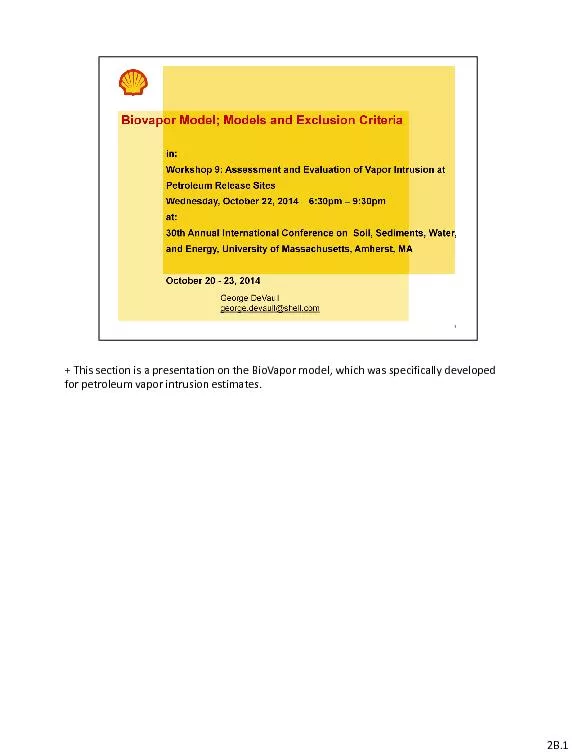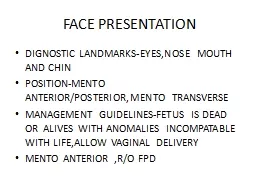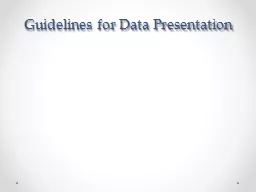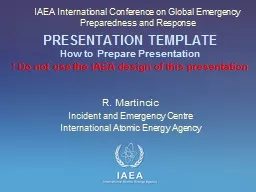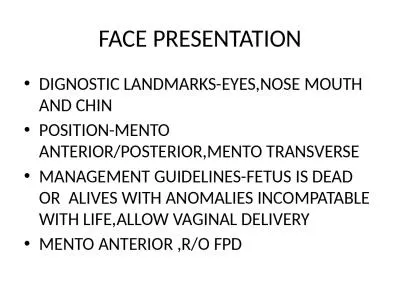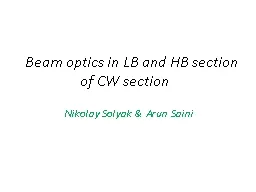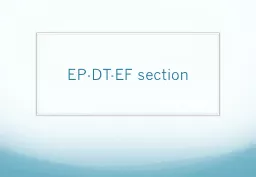PDF-+ This section is a presentation on the
Author : faustina-dinatale | Published Date : 2016-03-20
BioVapor model which was specifically developed for petroleum vapor intrusion estimates 2B 1 2B 2 The talk includes A brief introduction and overview Several
Presentation Embed Code
Download Presentation
Download Presentation The PPT/PDF document "+ This section is a presentation on the" is the property of its rightful owner. Permission is granted to download and print the materials on this website for personal, non-commercial use only, and to display it on your personal computer provided you do not modify the materials and that you retain all copyright notices contained in the materials. By downloading content from our website, you accept the terms of this agreement.
+ This section is a presentation on the: Transcript
Download Rules Of Document
"+ This section is a presentation on the"The content belongs to its owner. You may download and print it for personal use, without modification, and keep all copyright notices. By downloading, you agree to these terms.
Related Documents

